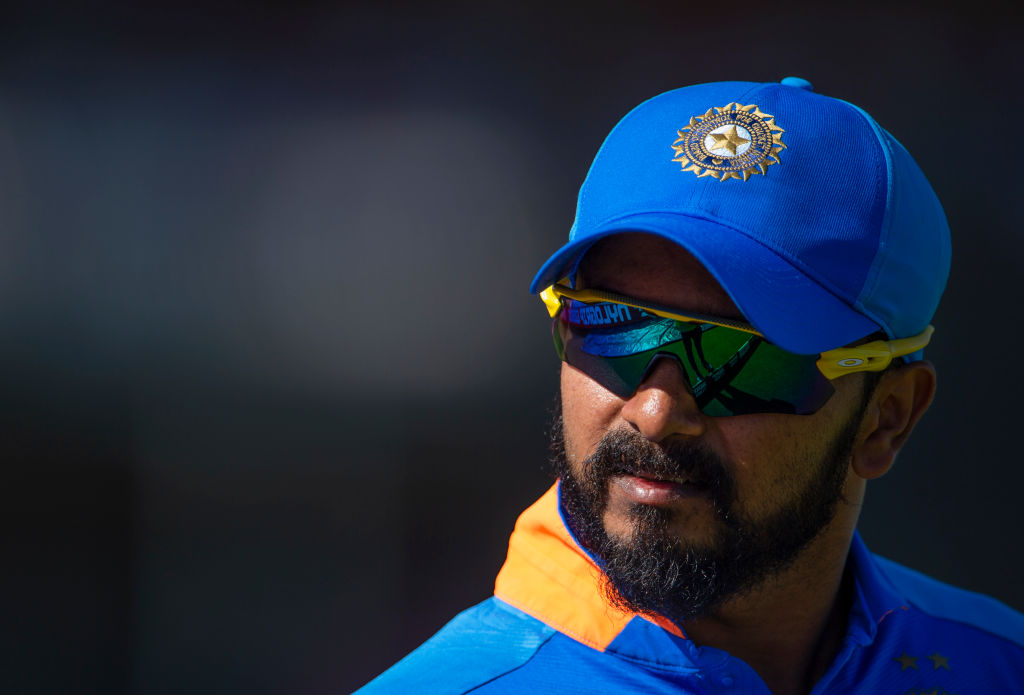India going around in circles with Kedar Jadhav selection
As a keen observer of the sport, some decisions make you content, a fair few get you thinking, a handful of them leave you puzzled and then there’s that one decision that keeps you up at night and leaves you longing for answers. Kedar Jadhav’s selection is of the last kind.

In the immediate aftermath of the 2019 World Cup debacle, had someone asked who’d be the first player that’d be shown the door, a vast majority of us would have taken the name of Kedar Jadhav without second thoughts. After all, having been groomed as a ‘finisher’ for no less than 24 months, it took just one questionable performance from Jadhav - an unbeaten 12 off 13 balls against England chasing 337 where he was lambasted along with MS Dhoni for not showing intent - for the selectors to abandon him altogether, just two matches before the all-important semi-final.
Hence it was obvious to expect a 34-year-old Jadhav’s head to be the first of all the heads to fall post the fiasco. Dinesh Karthik and Vijay Shankar’s heads certainly did, but not Jadhav. Six months post the havoc, Jadhav stands tall, as one of just seven Indian players to have featured in every single ODI post the 2019 World Cup; a plot twist that even Christopher Nolan would be proud of.
Jadhav’s ODI career is one of the more interesting case studies going around in the world of cricket today. With more than 1300 runs to his name, an average north of 40 and a strike rate well over run-a-ball, the ‘pocket rocket’ has statistically had a career worthy of demanding a ‘great finisher’ tag. But truth be spoken, his numbers have been skewed by the 18 not-out he’s accumulated over the course of his 50-innings ODI career and more often than not, he’s found himself overwhelmed by the big occasion. It was one of the reasons why the team management decided to pull the trigger on him mid-way through the World Cup.
Whilst Jadhav surviving the ‘cleanup’ is surprising, what’s perhaps more surprising is he’s slotted straight into the XI, despite considerable competition. In the Vijay Hazare Trophy post the World Cup, all the Maharashtrian could manage was 115 runs in 6 innings at an average just over 19 - numbers that by no means warrant a call-up. In stark contrast, Manish Pandey, a direct competitor for Jadhav’s spot in the team, racked up over 500 runs at an average and strike rate north of 100, and yet, the Karnataka man did not feature in a single ODI post World Cup.
Of course, there can always be an argument made that Jadhav’s ability to roll his arm-over, the ability to act as a precious fifth or a sixth bowler, gets him the nod over his fellow competitors, but it is to be noted that Jadhav has not bowled a single delivery in 6 of the last 10 ODI matches he’s featured in and, in this time span, has bowled a grand total of just 11 overs. In fact, for his state side Maharashtra, too, Jadhav rolled his arm over in just one of the six matches he played in. Whether it’s an injury that’s stopping him from bowling is something we do not know, but the fact that skipper Virat Kohli preferred to throw the ball to a rookie all-rounder Dube over Jadhav, bowling second on a Chennai track, speaks volumes of where he stands as an ‘all-rounder’ in the team.
The long-term sustainability of Jadhav’s selection also beggars belief, for he’ll be turning 35 in a couple of months time and is most likely not going to feature in the team’s plans for the 2023 World Cup. Couple that with the fact that he is now all but a specialist batsman, the point of his inclusion raises further questions.
It can also be argued that with the WT20 less than 9 months away and with Jadhav’s door to the mega event all but shut, the team management have let slip a golden opportunity to blood in one of Pandey or Suryarkumar Yadav, both of who have broken doors in domestic cricket this season with their performances and will be prime contenders vying for that ‘one’ spot in the fifteen come October. Intra-format experimentation might not be a viable tactic but it just might have been worth taking a punt, for at least it would have, both in the short and the long run, made more sense than persisting with Jadhav.
When an Australia turned to a George Bailey or a New Zealand turned to a Grant Elliott, there was a dire need for an experienced campaigner, a leader, to restore sanity within their teams, on top of a scarcity of world-class batsmen. And they, too, for all their achievements, were slowly phased out post the World Cup. With India facing neither of these problems and at this point in time, enjoying the luxury of having an abundance of talent and experience giving them ample room for experimentation, persisting with Jadhav, in more than one way, is a move pointing towards regression.
At 34 years of age, Kedar Jadhav becoming a mainstay in the team post the World Cup, as much as it’s bewildering and puzzling, is equally jolting and dumbfounding. It is one of those decisions that you never saw coming and will never be able to make sense out of or get answers for, no matter how hard you think. It also sheds light on the short-sightedness of the team management and makes one wonder if there’s a direction and process to the selections.

Comments
Sign up or log in to your account to leave comments and reactions
0 Comments